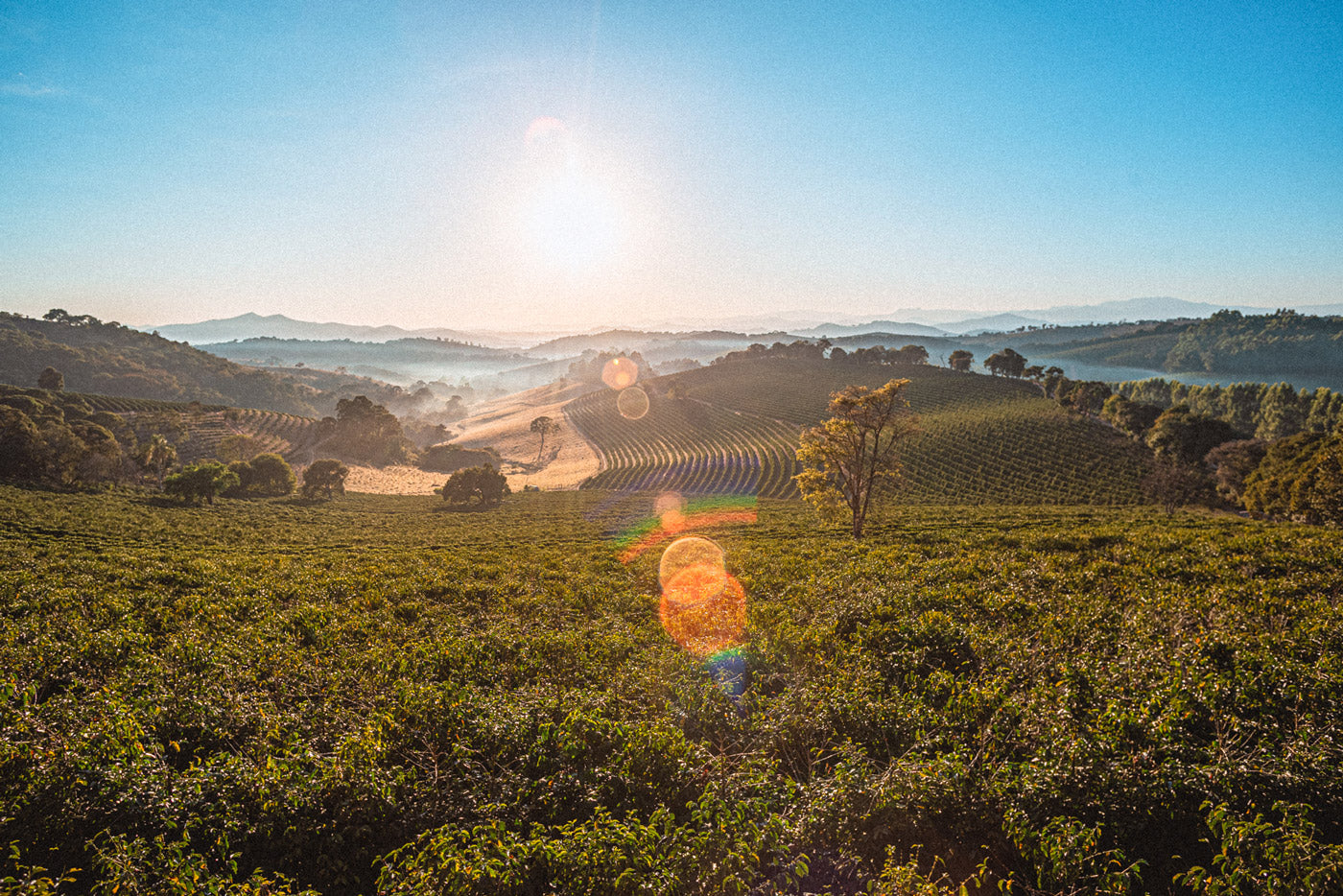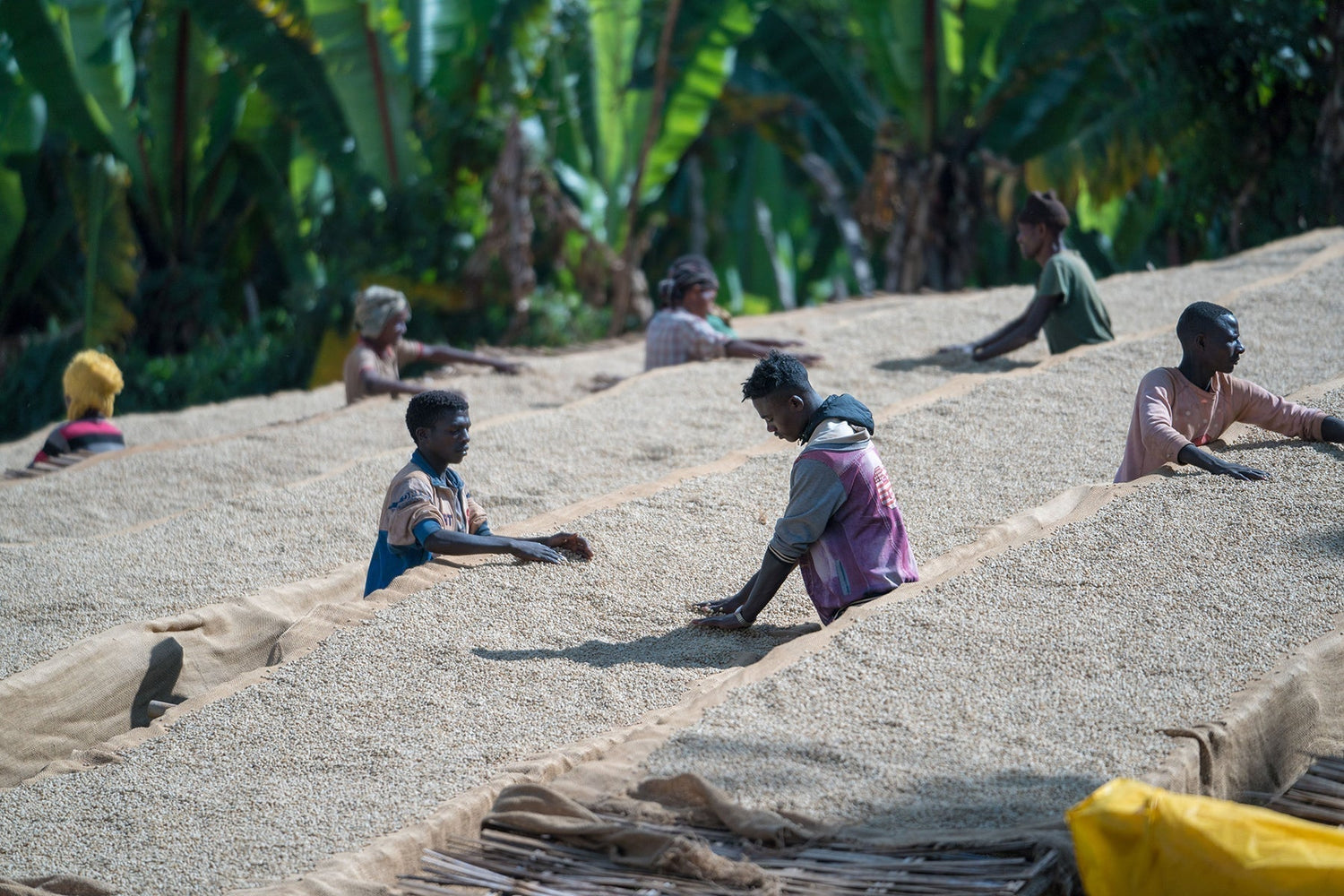Mild winters allow new pests to spread, while hot and dry summers reduce crop yields. Climate change will have a massive impact on agriculture in the future. And what about coffee and climate change? This will also have an impact here. But don't worry, there will still be coffee in the future. Maybe less, maybe more expensive, maybe just different. There are many ways to counteract climate change in the countries where coffee is grown.
Coffee and climate change – what will happen in the future?
The bad news first: According to the Geography of Food research group at the University of Applied Sciences in Wächswil, Switzerland, the area used to grow Arabica coffee will shrink by up to 60 percent by 2050 due to climate change. That sounds frightening at first. But on the one hand, it is only a study and not an exact prediction of the future, and on the other hand, it can be counteracted with suitable measures. Or coffee cultivation can be redesigned so that there will still be enough coffee in the future.
Coffee and climate change – why is coffee so affected?
The Swiss study primarily examined the growing areas of avocados, cashews and coffee. Among other things, it found that the agricultural areas used to grow Arabica coffee are particularly affected by climate change because the plants are particularly susceptible to temperature changes. Coffee also needs nutrient-rich soil and sufficient rainfall. If the climate becomes drier and hotter, this could also deplete the soil.
For the plants, a balanced climate without extreme heat, with

Sufficient rainfall and plenty of shade (especially during the ripening period) are essential. Arabica plants, for example, grow best at an average temperature of between 18 and 22 °C at an altitude of over 900 meters. This shows how sensitive coffee plants are and how threatening climatic changes can be.
Other studies take a similarly critical view of the future, although they give coffee-growing countries more time. According to a study by the Potsdam Institute for Climate Impact Research, for example, there will probably be an expansion of the area used for growing coffee in Ethiopia until 2090. But by then, up to 40 percent of the area used for growing coffee will be unusable.
Coffee and climate change – where coffee cultivation is hit hardest
The world's largest coffee producer, Brazil, is expected to be hit the hardest by climate change. According to Swiss researchers, as early as 2025, a good 95% of the current cultivation areas for Arabica could no longer be suitable. Even if we manage to reduce global emissions by then, the area suitable for growing Arabica in Brazil will be reduced by a good three-quarters.
Other countries of origin will also be affected by a decline in coffee cultivating areas, including Indonesia, Vietnam and Colombia.
Coffee and climate change – what can we do?
As a coffee producer, it is best to start thinking now about how to counteract this decline in Arabica cultivation areas. Possible options include liming the soil, irrigation or other site-specific measures. Another option is to switch to other types of coffee such as Robusta, which are much more resistant to temperature fluctuations. What is already clear today is that coffee prices will rise in the future. Just last year, coffee prices on the world market reached a new record high.

Coffee and Climate Change – Hope in Other Varieties
Back in the 1970s and 1980s, a relatively insignificant variety, Robusta, saved the world coffee market. During a coffee rust epidemic, Robusta's resistance to the disease was discovered. Over the years, Robusta gained more and more share of the world market and the plant was also used to cross it with Arabica varieties so that they also became more resistant to coffee rust. The same will probably be done in the future to combat climate change. For example, there is the Excelsa variety, which today only accounts for 1% of the world market. Its advantages, however, are that it thrives well on drier soil and a satisfactory yield can be achieved even in years with little rain. And then there is the Liberica variety: although it requires a longer ripening process than Arabica and Robusta, it is considered to be very resistant to parasites and is superior to both Arabica and Robusta in terms of production volume and lifespan.
Coffee and Climate Change – Coffea Stenophylla
According to a study conducted by Aaron Davis, 75 of the 123 coffee varieties that exist are threatened with extinction. It will therefore undoubtedly become more complicated to grow coffee in the future, especially in sufficient quantities to meet global market demand. The Stenophylla coffee variety offers a particular glimmer of hope. The beans currently only grow in West Africa, taste like Arabica, but are more resistant to heat and rain. The first plants were already grown on a large scale as part of the study (around 2020) to test whether this works. According to the study, Stenophylla coffee could initially come onto the market as a niche product in the next few years, but could eventually replace Arabica coffee as the market leader.
Coffee and climate change – new areas as a solution?
But developing new areas for growing coffee is not so easy, and neither in the interests of climate change nor in the interests of coffee farmers. New areas would be accompanied by a not insignificant amount of deforestation, which is bad in itself. In addition, a good 30 percent of coffee farms are run by women, 70 percent of the workforce on coffee farms are women: and unfortunately, coffee comes from countries where women are always severely disadvantaged. For example, farmers are usually not granted loans due to the lack of stability and high risks of growing coffee. To make matters worse, in some regions women are allowed to use land but are not allowed to legally own it.
Coffee and climate change – what can the end consumer do
This means, among other things, that more chemicals and fertilizers are used to protect the plants on existing land from pests and diseases. But this is not in the spirit of sustainability either, because the chemicals damage the soil and will render the cultivation area unusable in the long term. Every single coffee lover is needed here!
What you can do is only buy coffee that comes from roasters who pay their farmers fairly or better than fairly. Like us, for example: we only buy directly and pay the farmers a significantly higher price than with Fairtrade. This allows local coffee producers to invest in organic farming and sustainability.
Coffee and Climate Change – Coffee Projects

Many roasters have already taken steps to produce coffee in a more sustainable and environmentally friendly way. At Wildkaffee, we make sure to only buy coffee from farms that grow according to organic farming guidelines. In addition, we have our own coffee farm in El Salvador with the Coffee School Project , where we pursue a sustainable and social approach. Through targeted training, the use of organic farming and direct exchange between farmer and roaster, a completely new perspective is created from which both sides benefit. This transparency gives roasters a precise insight into the work that goes into producing the best coffee taste, while farmers get stable trading partners with whom they can trade fairly and directly.
Coffee and Climate Change – Organic Farming
We want to change something, which is why we focus on coffee that is cultivated in harmony with nature, according to the standards of organic farming . We use ecological plant protection products and fertilizers that are made from our own microorganisms. This promotes the sustainable regeneration of nature and its mineral-rich soils. The big plus: the quality of the coffee is also increased enormously and you can taste it too. So you are by no means powerless: by buying coffee from roasters that pay attention to sustainability and fair payment, you support development and help ensure that good coffee remains available even in times of climate change.
Coffee and Climate Change – Conclusion
In the future, it will be more difficult to grow good coffee. Climate change will sooner or later make some of the land that still exists today unusable. Coffee farmers around the world will have to rethink their approach and focus on new methods such as organic farming or even on new, more resistant varieties such as Stenophylla or Excelsa. You can also help by buying coffee that you know has been grown as sustainably as possible and that the producers have received a fair price for their work. Because if that is no longer guaranteed, then at some point we will run out of morning coffee and afternoon coffee and coffee after dinner and espresso and so on and so on.


